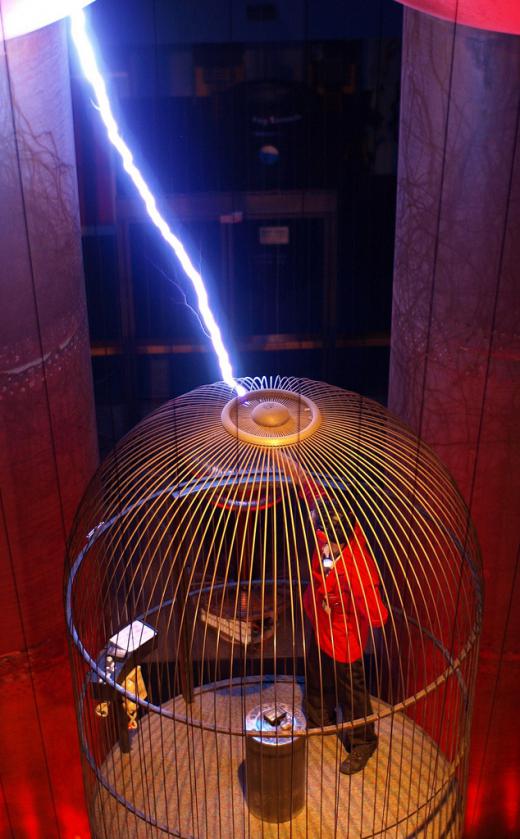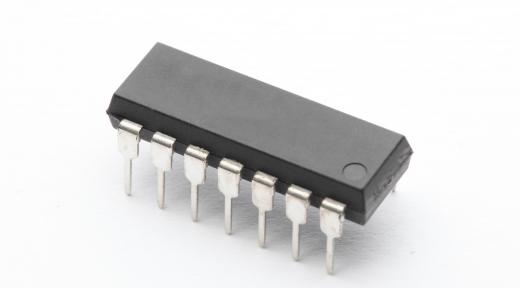What Is Electromagnetic Simulation?
Using approximate computations to Maxwell’s equations and Faraday’s law, electromagnetic simulations are models of electromagnetics and their effects on the environment and physical structures about them. An electromagnetic simulation can be used to aim a satellite antenna in the right direction for maximum channels and clarity and judge its performance or to determine wave propagation when not in free space. These simulations can aid in the efficient design of computer chips and point to how to improve performance in major electronics by locating the incompatibilities of components within them. Electromagnetic radiation being picked up and scattered and then absorbed by small particles is used in simulations for science projects at the European Organization for Nuclear Research (CERN) laboratories for their particle accelerators projects. Electromagnetic simulation programs are also being used as tools in college physics labs to teach more effectively as students receive hands-on experience with solving problems using them.
Solving Maxwell’s equations at each point in an orthogonal or non-orthogonal grid is one of the avenues to use grids to discretize space by creating a topological survey of the space. Solving these equations in an electromagnetic simulation often reveals problems in computer memory and power as they usually can only be done on supercomputers by time-stepping for each instant of time throughout a whole domain, solving the Maxwell equations as they go or split-stepping using time iterations and fast Fourier transforms. In fluid mechanics, the boundary method or “method of moments” (MoM) can be applied to solve engineering problems, acoustics, and electromagnetics. This focuses calculations only on the border areas of a space rather than the volume values at every time step of the entire space.

A kitchen microwave is analogous to what is known as a Faraday cage, which illustrates how an electromagnetic simulation model might be useful in electromagnetic protection. Electrical currents can be blocked by metal walls or other such shielding devices whereas magnetic currents merely can be moved around the obstruction. In Faraday’s cage, when the walls of the cage are grounded, an electric current’s path is disturbed by electrons acting as electric charge carriers in a mesh pattern and compensate for the field; this cause the electric current to dissipate. Just as the mesh screen on the front of a microwave door blocks microwaves from escaping the device because microwaves are larger than the tiny holes in the mesh, an electromagnetic mesh simulation can design good protective shielding from electrical currents.

An electromagnetic simulation method that solves Maxwell equations by cycling through an electric field for one instant and then cycling through a magnetic field for the next instant and repeatedly alternating over and over again is known as the finite-difference time-domain (FDTD) method for producing simulations. EM wave interaction with material structures engineering problems have been solved by this method more than any other in the US since around 1990. It is used in solving for radar signature technologies, wireless technologies and biomedical imaging, just to name a few of its applicable uses.
Wave modeling for electromagnetic simulation and analysis of circuits can be performed using the partial element equivalent circuit (PEEC) three-dimensional (3-D) full-wave modeling method. Integral equations are interpreted as Kirchhoff’s voltage law and, using PEEC, are applied to a PEEC cell which gives the 3-D geometries solution of a complete circuit, allowing additional circuits to be piggy-backed onto the direct current design. Using models such as this in electromagnetic simulation saves time and money costs in the manufacture of integrated circuits.
College physics departments are starting to make use of video games designed to give students lessons via electromagnetic simulation to visually depict to the students the phenomena of physics representations. This can help students gain a better grasp of concepts and afford their brains experiences that reveal to them weaknesses in their own understanding and the steps to take to strengthen these. Both students and instructors alike have found that both faster and more in-depth learning can be facilitated using real-world examples of physics concept solving by means of electromagnetic simulation software.
AS FEATURED ON:
AS FEATURED ON:












Discuss this Article
Post your comments